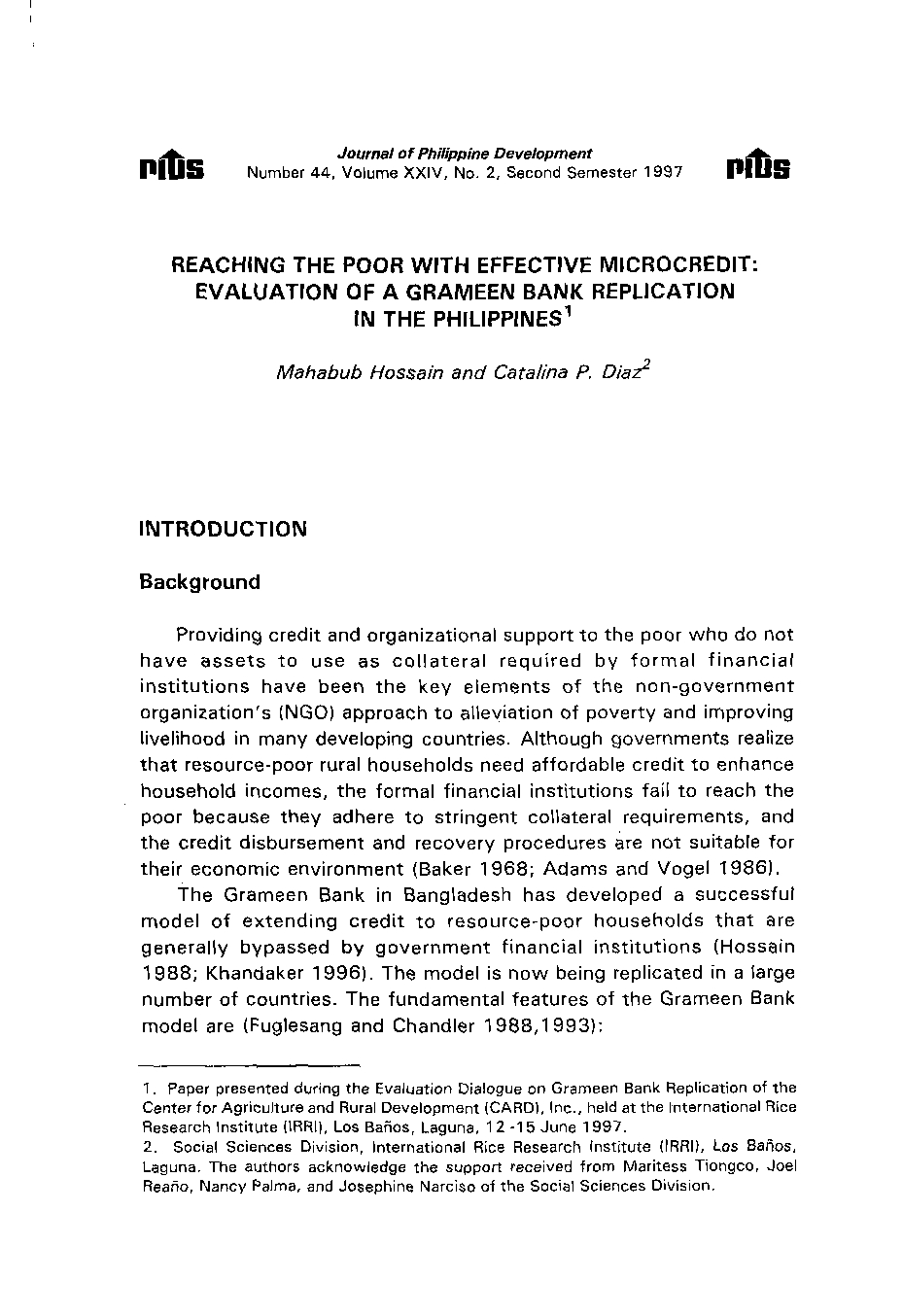Abstract
Credit provision for small and poor households has always been the major element of nongovernment organizations in alleviating poverty. Recently, there has been a move to replicate the Bangladesh Grameen Bank in the Philippines known as Landless People’s Development Fund. This paper assesses its financial viability at the borrower’s level. The institution’s sustainability is also investigated in terms of sources and fund utilization, administration costs and other branches of financial viability.
Citations
- Lamberte, Mario B.. 2001. Expanding banking services to micro, small and medium enterprises and poor households in the Philippines. Discussion Papers DP 2001-24. Philippine Institute for Development Studies.
- Aldaba, Fernando T.. 2002. Philippine development: A research journey through the Philippine Journal of Development. Philippine Journal of Development PJD, 29. Philippine Institute for Development Studies.
- Lamberte, Mario B. and Ma. Chelo V. Manlagnit. 2003. Integrating gender perspectives in evaluating the efficiency of Cofi: The case of credit cooperatives in the Philippines. Discussion Papers DP 2003-06. Philippine Institute for Development Studies.
- Nilakantan, Rahul et. al. 2021. On ethical violations in microfinance backed small businesses: family and household welfare. Journal of Business Ethics, 172, No. 4, 785-802. Springer.
- Lamberte, Mario. 2000. Transforming land bank into a microfinance development institution. Discussion Papers DP 2000-34. Philippine Institute for Development Studies.
- Ghalib, Asad. 2011. Estimating the depth of microfinance programme outreach: empirical findings from rural Pakistan. Global Development Institute Working Paper Series 15411. GDI, The University of Manchester.
- Subhani, Muhammad Imtiaz. 2010. Impact of microfinance on the performance of an agriculture industry in Pakistan. MPRA Paper 36173. University Library of Munich, Germany.
- Rola-Rubzen, Maria Fay, Fe M. Gabunada, and Ria Mesorado. 2002. Credit constraints and opportunities for smallholder producers in the Philippines. 2002 Conference (46th), February 13-15, 2002. Australian Agricultural and Resource Economics Society.
- Vaessen, Jos. 2014. The effects of microcredit on women's control over household spending in developing countries: a systematic review and meta‐analysisa. Campbell Systematic Reviews, 10, No. 1, 1-205. John Wiley & Sons.
- Ghalib, Asad. 2013. How effective is microfinance in reaching the poorest? Empirical evidence on programme outreach in rural Pakistan. Journal of Business Economics and Management, 4, No. 3, 467-480 . Taylor & Francis Journals.
Full Issue
SHARE
